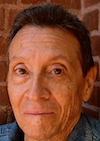
I consider my brief public comments on the subject of Shelby Lee Adams’s photographs of Appalachia, as excerpted in Jennifer Baichwal’s film, The True Meaning of Pictures, evenhanded, sensible, and hardly controversial.
So I’m surprised that some have taken offense at what I view as my eminently reasonable assumption that Adams’s rural collaborators don’t understand how these carefully staged and distinctly noir-ish images get interpreted by the audiences to which Adams energetically markets them. Not because those audiences carry around prejudicial stereotypes they project onto the supposedly neutral or positive images, but because the images come loaded with triggers — embedded therein by the combination of Adams’s heavy directorial hand and his stylistic mannerisms — that activate those stereotypes, even in viewers prepared to set any preconceptions aside.
Those typical consumers of his work would include photo and art gallery and museum visitors with some grounding in and awareness of photographic practice; critics, historians, curators, and collectors of photography; practitioners of and scholars in the fields of documentary photography, film, and video (including photo teachers and their students); buyers of pricey photography monographs; readers of the kinds of glossy periodicals in which these pictures get reproduced; and the general audience for contemporary photography.
I can guarantee you that film blogger Marilyn Ferdinand and Appalachia-booster Mark Lynn Ferguson would never suggest that viewers with no awareness of filmmaking techniques or film history would understand how Citizen Kane — or, to take an example closer to home in terms of locale, The Night of the Hunter — resonated at the time of their respective premieres or how they signify today; how they achieve their visual and narrative effects; how POV and lighting and montage and staging and choice of lenses and selective focus and framing, as aspects of directorial style and strategy, shape the contents of these films into their content.
Awareness at that level doesn’t require going to film school, or working in the film industry, or reading deeply in the history and criticism and theory of film. Indeed, a non-specialist from another part of Appalachia — Knoxville, Tennessee — with no formal education in film, figured it out mostly by himself, becoming a germinal film critic: James Agee (who also wrote the screenplay for The Night of the Hunter, among other movies). It didn’t hurt that he’d gone to college and studied literature, but that hardly qualified him as a film critic. He earned his place in film history not just by watching films and responding to them, but by developing an analytical relationship to them.
Photography projects like Adams’s manifest a complexity comparable to that of films. That doesn’t mean that more than a few rise to the level of the Orson Welles and Charles Laughton films mentioned above. But there’s a reverse condescension, a bullshit egalitarianism, in pretending that a high-school student’s “response paper” in reaction to Moby-Dick has the same gravitas as the essay by Alfred Kazin that positioned Melville’s magnum opus centrally in American literature. The same mawkish, patronizing, white-liberal tendency permeates the assertions of Ferdinand and Ferguson that Adams’s subjects understand exactly what the images on which they “collaborate” with him convey to the outside world.
•
It doesn’t surprise me that Adams’s subjects don’t bring any analytical tools to bear on the issues of visual imagery, and therefore spend their on-screen time in Baichwal’s film talking instead about the people in the pictures and their personal relationships with the photographer. It does amaze me that a film devotee like Ferdinand doesn’t engage with the highly stylized, noir-ish component of Adams’s project, and that an ostensibly literate, informed gent like Ferguson apparently doesn’t even see it.
In short, like Adams’s subjects, Ferdinand and Ferguson and their commenters come to this debate as naïfs (though, in their cases, faux-naïfs). And while I find some sociological value in having access to the spontaneous responses to Adams’s pictures of people both unfamiliar with what those in the field see as the core issues and lacking as reference points even the best-known relevant projects, I’d take more seriously the considered opinions of those who’ve engaged with issues of documentary on a professional level — practitioners, picture editors, critics, historians, curators.
•
Less surprisingly, those who find these comments of mine upsetting demonstrate little to no awareness of the energetic discourse around documentary practice in the lens-based media that stretches back at least to the controversies over the work and methods of Peter Henry Emerson in his projects about rural England from the 1880s, Edward S. Curtis’s North American Indian opus initiated in 1906, and Robert Flaherty’s classic 1922 film Nanook of the North. They cite no parallel projects in any of the lens-based media in re such issues as insider vs. outsider status and the consequences thereof, long-term engagement with particular communities, or the imposition of directorial strategies and extreme stylization on the raw material before the lens. They appear unable to separate the contents of the imagery from its content, the “about” from the “of,” conflating the two — the most elementary trap into which response to photographs can fall.
They also seem unaware of the extensive literature that has accumulated around ethnography, visual anthropology, visual sociology, and documentary photography, film, and video — the writings of Gregory Bateson and Margaret Mead (click here for a pdf download of their classic Balinese Character; you’ll have to wait a while for it to load), John Collier, Jr., Paul Byers, Sol Worth, Jay Ruby, Edmund Snow Carpenter, Howard S. Becker, et al.
•
For those who will wonder (some always do) whether my response to Shelby Lee Adams’s work springs from some professional or personal animus, I can answer unequivocally: No.
 Adams and I have crossed paths only once — at the Penland School of Crafts in North Carolina in August 1998, when he and I taught concurrent workshops in Penland’s summer photography program. He took his students out on field trips, afterward critiquing their work; I called my workshop “Writing to/from Photographs,” and put my participants through exercises in writing with great precision about found photographs, while also exploring a range of other issues in criticism.
Adams and I have crossed paths only once — at the Penland School of Crafts in North Carolina in August 1998, when he and I taught concurrent workshops in Penland’s summer photography program. He took his students out on field trips, afterward critiquing their work; I called my workshop “Writing to/from Photographs,” and put my participants through exercises in writing with great precision about found photographs, while also exploring a range of other issues in criticism.
At mealtimes and after class sessions we mixed and mingled with Adams and his group, as well as the instructors and participants in the other workshops from the summer program. Adams and I chatted a bit — he struck me as a perfectly likeable guy — but didn’t hang out. Each evening, one of the workshop presenters offered a lecture about his or her work, open to all the faculty and attendees from all workshops, so we all got to hear a bit about the different workshop leaders.
I’d gone through several of Adams’s books at that point, had read his texts in them, and had seen one of his exhibitions, but for one reason or another had never reviewed or otherwise commented on his work for any publication. Few of my students knew of him. They constituted a real mix: an economist from southeast Asia (there because his wife had enrolled in another workshop, and mine seemed the closest to his interests); several photo teachers; several photographers; a maker of artist’s books who used photographic imagery; a teacher of 20th-century art history; a poet and fiction writer. All of them adults, at least few years out of school. Some had come a long distance, some from nearby — and Penland is in Appalachia.
Without saying anything about Adams or his work, on the afternoon before his lecture I assigned it to them, as an opportunity to correlate what someone says about his or her work with the work itself, and as a way of sorting out response to the person from response to the work. (We’d discussed these problems for the critic in our previous sessions.) I indicated that we’d gather after breakfast the next morning to talk about it.
When we did, without offering any opinion of my own, I simply opened the floor to them. Out came a flood, surprisingly consistent given their diverse backgrounds. Without exception, they experienced a profound disconnect between Adams’s verbal contextualization of his pictures — fairly close to his commentary on them in the Baichwal film and elsewhere — and the photographs themselves (many of the images, though not all).
I felt a certain relief, because I’d experienced that same duality all through the previous evening’s slideshow with Adams’s voiceover and the later q&a. This photographer’s pictures did not synch with the motives and purposes and understandings he claimed for them. The fact that he struck me (and my workshop attendees) as absolutely sincere in his assertions made the combination all the more problematic. Because, unless you bought his verbal narrative, the pictures told another story, and none of us could reconcile the two.
The Mean Truth of Picturing
In “Photography and Place,” a May 2012 post at his blog Conscientious responding to a different controversy over a different set of photos of Appalachia, Joerg Colberg makes this useful observation:
“We must not overburden photography with something it cannot do — providing us with an accurate portrayal of anything. Instead, we must acknowledge the maker’s hand, and we should talk about its role — and our reactions.”
Or, as I put it back in 1987:
“[W]e must think of every photograph as a form of collaboration between subject, photographer, and medium. The last of these operates subcutaneously — beneath the skin of the imagery; most commonly, it calls as little attention to itself as possible, seeking no credit for the final results, even if in fact it dictates them outright. The more immediate, observable transaction is between subject and photographer; it is in this dialogue — sometimes contestual and sometimes cooperative — that control of the final image is negotiated.
“In that bargaining the photographer almost always has the upper hand. What I mean by this goes well beyond the fact that some subjects are extremely pliable, perhaps even helpless, insensate, inanimate. Any photographer worth his/her salt — that is, any photographer of professional caliber, in control of the craft, regardless of imagisitic bent — can make virtually anything ‘look good.’ Which means, of course, that she or he can make anything look ‘bad’ — or look just about any way at all.
“After all, that is the real work of photography: making things look, deciding how a thing is to appear in the image. For photographs do not ‘show how things look,’ since there is no one way that anything looks. Every thing has an infinitude of potential appearances, a multiplicity of aspects. What a photograph shows us is how a particular thing could be seen, or could be made to look — at a specific moment, in a specific context, by a specific photographer employing specific tools.
“The photographer, then, is an active partner (most often the dominant one) in the construction of any photographic version of the world.”
— from “The Image in Question: Further Notes on the Directorial Mode,” reprinted in my 1998 collection of essays, Depth of Field.
I’ve done no systematic research on the critical response to Adams’s work, and don’t plan to; his project doesn’t engage me in any way that requires such investigation. But I’m certainly interested in what readers of this blog have to say on the set of issues raised by his images — and by Baichwal’s excellent film, which manages the difficult feat of putting those questions on the table without leading the viewer to any particular answers.


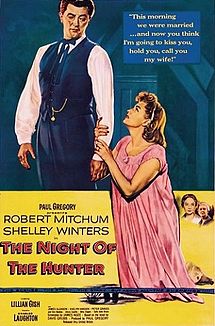
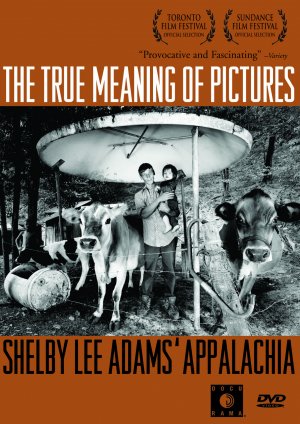
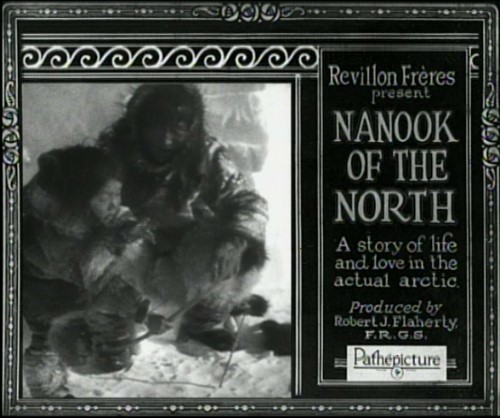
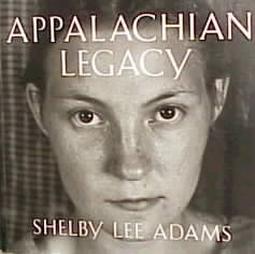
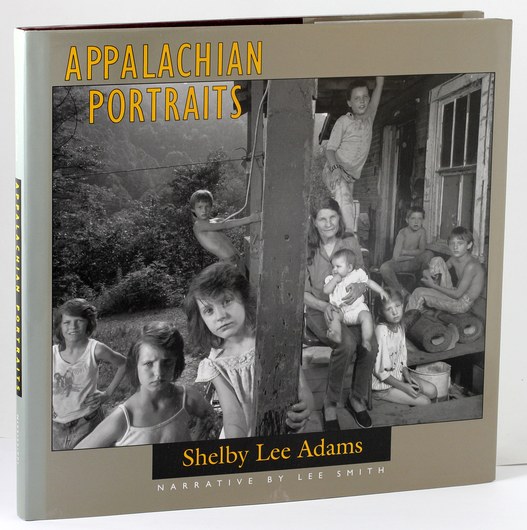




I never realized that reading about photography could be so full of suspense, and these last two series’, on “Robert Capa on D-Day” and on “the true meaning of pictures” have been real critical (and sociological) thrillers!
When a witness to anything, with or without a camera, says “I was there and this is what happened” it would seem obvious to ask them who they are and what relation they have to the events they witnessed. I’ve noticed that in photography this is often perceived as some sort of impertinence. It seems to break the spell, the “magic” of …objectivity.
Which brings me to this consideration: In trompe l’oeil painting (when it’s good it absolutely “fools the eye”) the real moment of pleasure arrives when one discovers that one has been fooled. Before that realization, the image is “invisible” and, therefore, pointless. In photography the same realization produces a sense of betrayal of our good faith, or maybe, of our need for consolation.
I dont know if one needs to be an iconoclast to understand pictures, but in general it’s always healthy to remain skeptical.
I’m pleased to hear that these series of posts convey some of the excitement of serious scholarship and criticism. As Thomas Harris wrote in The Silence of the Lambs, “Problem-solving is hunting. It is savage pleasure and we are born to it.”
Not only is all photography collaborative, it is also exploitative. As much of my work has involved volunteers, I am keenly aware of that. While I attempt to convey respect for the subjects (not everyone’s goal, of course) it does not always show up in the images. Nothing wrong with that but it is important to understand when your objectives and hopes do not always match the result. All too often, what a photographer or artist says about the work is more about what they think the audience wants to hear than the, often difficult, truth.
Chuck
Excellent. After reading I started remembering how Les Krims’ “The Deer Slayers” had received complaints on how he had exploited the hunters photographed by his use of high contrast and toning. How he made them seem evil. Then I heard that he had remarked that all who were photographed had received prints of themselves and were quite pleased.
Of course Les is not attempting documentation of any sort. Outside of his ‘role’ of being a conceptualist that is.